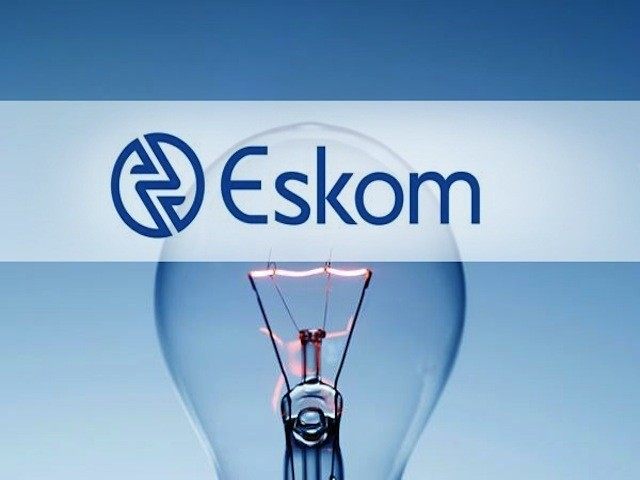What would you do, if you needed to heat your house on a cold and snowy winter night – you flicked the switch on your electric heater – and nothing happened? What if, when power finally returned, you turned on the TV, and saw the minister in charge of the public power utility, explaining that a similar blackout might occur every night, between 4pm and 10pm, for the rest of the winter?
This is the situation faced by the millions of South Africans who rely entirely on electricity supplied by government utilities to heat their homes. Infrastructure Minister Lynne Browne has admitted in a press conference, that for the first time ever in winter, the state energy utility Eskom will be forced to implement load shedding – planned blackouts – to prevent a total collapse of the South African electricity system.
According to a press statement by Infrastructure Minister Lynn Brown;
On Monday, Eskom implemented stage 2 load shedding and load curtailment from 16h00 until 22h00, due to a shortage of generation capacity brought on by the fact that several units were out of service due to planned and unplanned outages.
Yesterday, Eskom at first implemented stage 2 load shedding, but at around 18h00 moved from stage 2 to stage 3 load shedding due to further shortage of generation capacity as additional units have had to be taken out of service for unplanned maintenance caused by technical faults.
At around 21h00 last night, load shedding changed back from stage 3 to stage 2 and stage 2 load shedding was stopped at 22h00.
Load shedding at stage 3 shows the seriousness of the constraints that we face but it is in no way an indication that we are close to a black-out.
Today, for the entire day, from 06h00 until 22h00, stage 2 load shedding will be in place.
The acting chairperson of the Eskom Board, Dr Ben Ngubane, has provided me with a detailed report on what happened during the last week.
The loss of a number of generating units early in the week reduced the available capacity to meet the demand on Monday.
It is expected that the situation would continue throughout winter when consumption is higher as the constraints on the grid means that planned, controlled, and rotational load shedding and load curtailment, are introduced to protect the power system.
At least part of the problem appears to be the peculiar arrangements Eskom employs to source generator fuel – purchasing expensive fuel through middlemen, rather than buying cheaper fuel directly.
“I cannot understand why Eskom cannot source its own diesel,” said Brown, adding that it was part of an in-depth investigation into Eskom’s functioning, which must be concluded within three months.
Of course, even in the midst of an electricity supply catastrophe, renewables and climate change still get a ridiculous amount of attention. Two schemes are cited in Minister Brown’s statement, a pumped storage system and a major solar installation. The pumped storage scheme just might help stabilise the grid, assuming there is enough spare capacity to charge the water reservoir, before the nightly shortfall. But the solar system – how much electricity will a solar installation produce, during winter?
A R4 billion loan was recently secured to scale up Eskom’s renewable energy generation capacity. Eskom will build the Kiwano solar thermal power station in the Northern Cape and the Ingula Pumped Storage Scheme in KwaZulu-Natal which will add 100MW and 1 332MW respectively to the national grid.
It seems likely that corruption has played a major role in this shambles. It is easy to forget, when reading about the latest expenses scandal, or uncomfortably cosy relationships between politicians and business figures who profit from their decisions, that corruption can have real consequences.
According to Corruption Watch, there is a public perception that corruption in South Africa is getting worse.
South Africans certainly think that public sector corruption is getting worse. Transparency International’s (TI) 2013 global Corruption Perception Index (CPI) shows that South Africa has dropped 34 places since 2001, with half the decline of 17 places occurring since 2009. South Africa is currently ranked at number 72 out of 175 countries and heading downwards.
In 2008, the South African government disbanded the Scorpions – a police anti-corruption unit, with a fearsome reputation for prosecuting corrupt government officials. At the time the unit was abolished, they were investigating officials connected to President Zuma – an investigation which President Zuma claims was politically motivated. The corruption investigation against President Zuma was dropped after the Scorpion unit was abolished. Whatever the truth behind the Scorpion saga, South Africa’s problems today are worse than they were in 2008. Nobody was scheduling planned winter blackouts in 2008.
The lesson from this disaster is, if you rely on the government for absolute essentials – like electricity to heat your home in winter – you are putting all your eggs in one basket. When the government drops the ball, through incompetence, mismanagement or corruption, instead of electricity, you receive an apology.

COMMENTS
Please let us know if you're having issues with commenting.